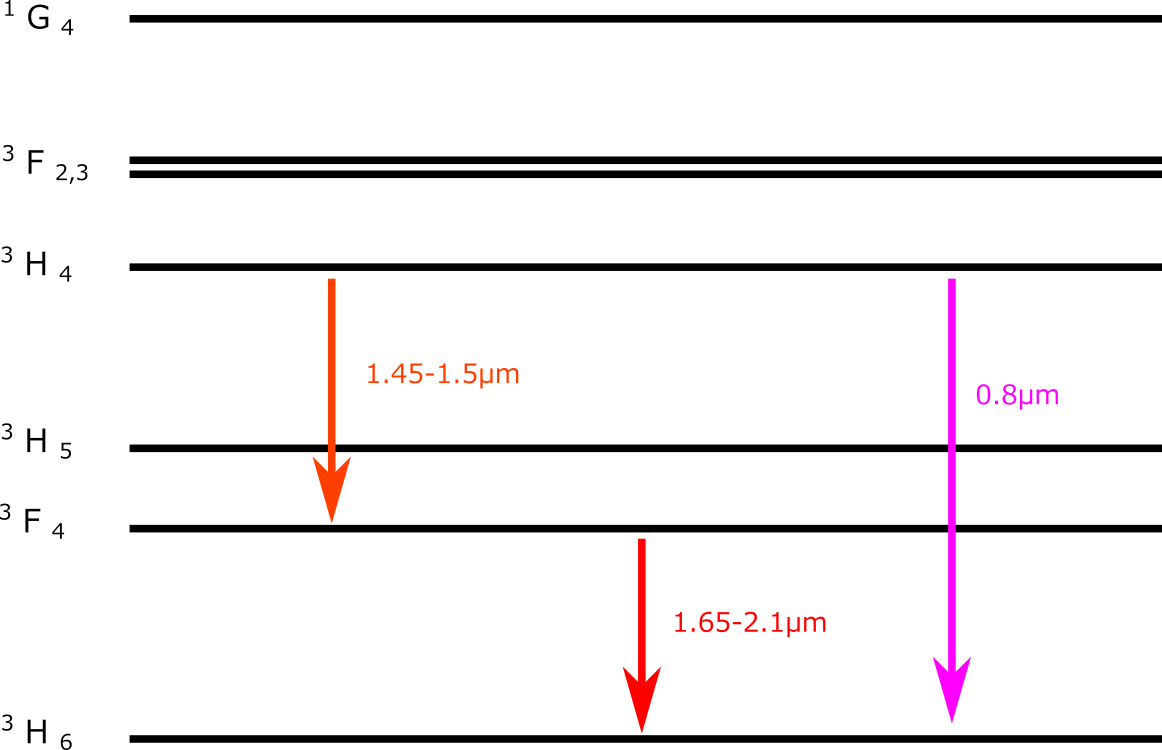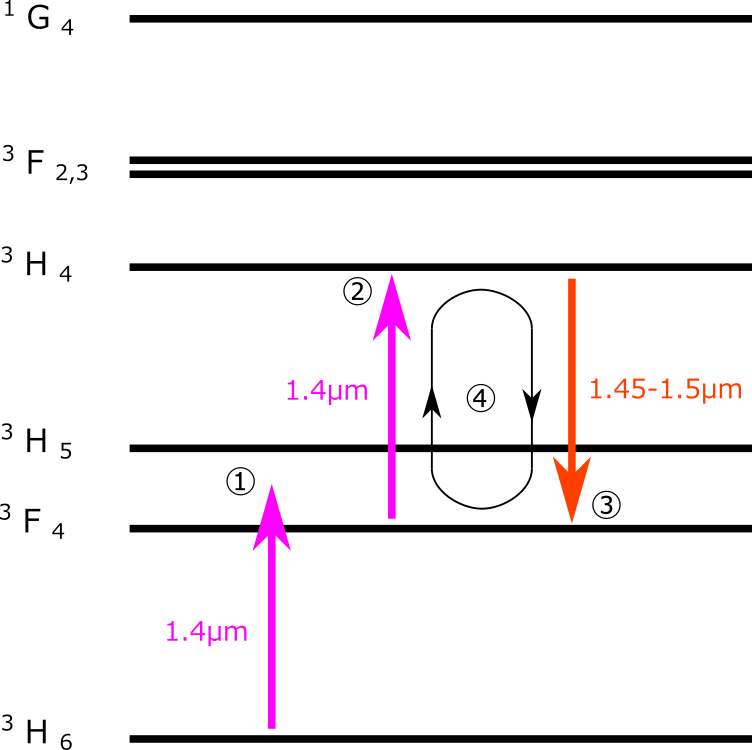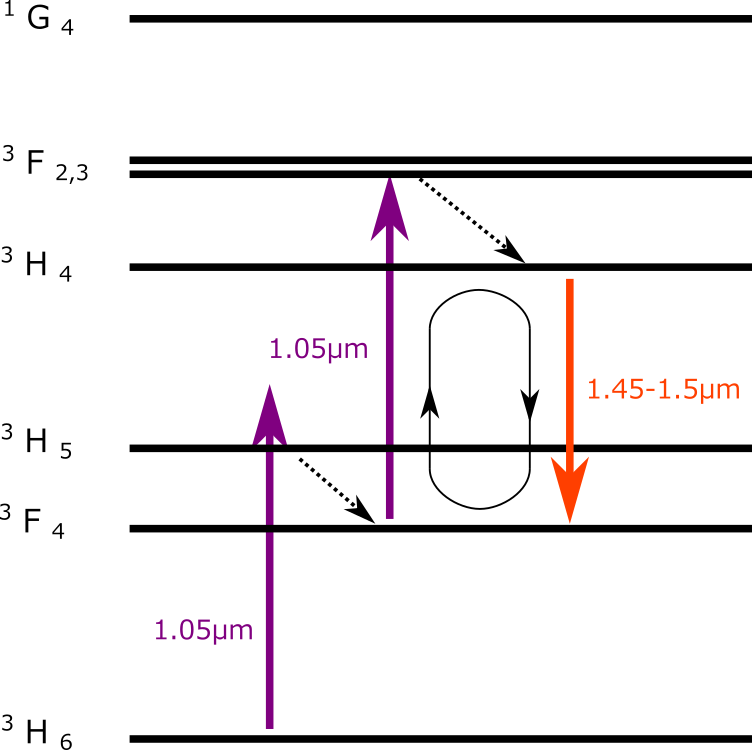JAPANESE / ENGLISH

JAPANESE / ENGLISH
Last updated on 05/7/2021
A thulium-doped fiber amplifier (TDFA) is often used for light amplification in the Near Infra-Red (NIR). Figure 1 shows major transitions for NIR emission. This article describes a TDFA used for light amplification in 1.45-1.5 µm.

Figure 1: Major NIR emission wavelengths from thulium ion.
Thulium (Tm) shows a broad emission centered at 1.47 µm, and the spectral range covers the S-band; therefore TDFA has been used in optical communication using the S-band.
One wavelength for pumping a S-band TDFA is 1.4 µm , where a pump laser diode is commercially available. The pumping scheme is shown in Figure 2. Thulium ion shows a weak Ground-State Absorption (GSA: 3H6→3F4) and a strong Excited-State Absorption (ESA: 3F4→3H4) at 1.4 µm, and amplification takes place by the following steps:

Figure 2: Energy diagram and amplification in Tm-doped fiber using 1.4-µm pumping.
Another choice of pumping wavelength is 1.05 µm . The energy diagram and pumping scheme are shown in Figure 3. This scheme would be superior for high-power amplification than the 1.4-µm pumping, as high-powered Yb-doped fiber lasers are commercially available in this wavelength range. The efficiency is, though, fundamentally lower due to the larger energy difference between the pump and signal; the larger energy difference results in excess heat (see dotted lines in Figure 3).

Figure 3: Energy diagram and amplification in Tm-doped fiber using 1.0-µm pumping. (The dotted line indicates heat radiation due to multiphonon relaxation.)
Another important factor for S-band amplification is the choice of host glass material. Silica glass – which is the most commonly used host glass for optical fiber – shows a poor emission efficiency due to its large phonon energy. In silica glass, a Tm ion excited at the 3H4 level rapidly relaxes to the 3H5 level by multiphonon relaxation and thus does not emit a photon. An optical fiber made by low-phonon-energy host glass, such as fluoride fiber or tellurite fiber, is needed for efficient amplification in the S-band.
FiberLabs offers the following products related to this article. Please visit these pages if you are interested in this article.
| Wavelength | S-band |
|---|---|
| Full lineup | S-band TDFA |
| Individual product | Bench-top Rack-mount OEM Module |